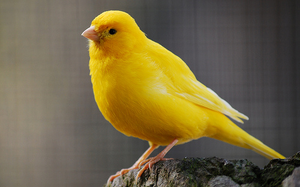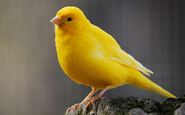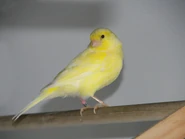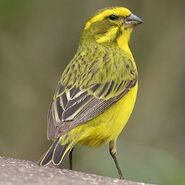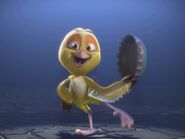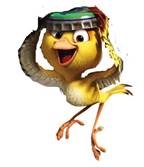| ||||||||||||||||
| [Source] | ||||||||||||||||
A Yellow Canary is a small bird with bright yellow feathers. The Yellow Canaries originally come from western and central Africa, although some are now domesticated. They feed on mostly fruits, nuts, and seeds. Nico is a Yellow Canary. For unknown reasons, Nico lives in South America and not in his native habitat.
Description[]
The yellow canary is typically 13 cm in length. The adult male color ranges from almost uniform yellow in the northwest of its range to streaked, Olive-backed birds in the southeast. The underparts, rump and tail sides are yellow. The female has grey-brown upperparts, black wings with yellow flight feathers, and a pale supercilium. The underparts are white with brown streaking. The juvenile resembles the female but has heavier streaking.
This species is easily distinguished from the yellow-fronted canary by its lack of black facial markings, and its bill is less heavy than that of other similar African Crithagra species.
The brimstone canary, with an overlapping range, is a known confusion species.
Feeding[]
The Yellow Canary is a voracious seed eater, which most likely plays a fairly large role in seed distribution throughout their home range.
Distribution and Habitat[]
The Yellow Canary population covers much of western and central regions of southern Africa and has been introduced to Ascension and St. Helena islands.
Calling and Singing[]
Amazingly, the Yellow Canary has a few different calls or songs that they can make. Its call can be described as chissick or cheree, and the song is a warbled zee-zeree-chereeo.
Captivity[]
Yellow canaries are very common as pets. They are often kept because of their beautiful song and appearance.
Taxonomy[]
The yellow canary was formerly placed in the genus Serinus but a phylogenetic analysis using mitochondrial and nuclear DNA sequences found that the genus was polyphyletic.e genus was therefore split and a number of species including the yellow canary were moved to the resurrected genus Crithagra.
For an overview of finch phylogeny (including canaries) see the entry on finches.

